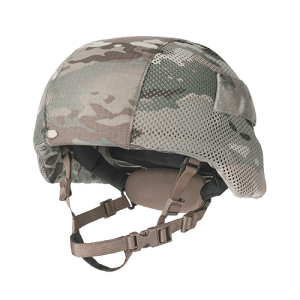
As far back as ancient times, soldiers were protected by special steel helmets to protect their heads. In particular, they were worn by the legionaries of Julius Caesar, the Scythians and medieval knights in Europe.
In modern times, the protective headgear in combat is no longer called a steel helmet. Today that name is not used. The new bulletproof helmet in modern usage is known to consumers as a military helmet. It is the military that accounts for the largest proportion of all users of this type of headgear. In addition to them, helmets are used by miners, construction workers, police officers, firefighters and extreme sports participants.
How did the term helmet come about?
A special piece of clothing designed to protect a warrior’s head during battle was originally called a helmet. Since this helmet was an integral part of armor and was also made of iron, the command of the troops included it in a typical military kit under the solemn designation “steel helmet” and declared it an effective means of personal protection for a warrior.
With the emergence of various branches of the military and the improvement of military skills, helmets have also undergone modernization. The helmets were made in the shape of a dome. They were made from steel. But history also knows samples of felt and leather, the protective properties of which were provided by many attached metal components. Due to the existence of such steel parts, the helmet was associated with iron. Over time, the more convenient word “helmet” came into use, which in Latin means “metal helmet”.
Helmet design

Military defence has always been the subject of research by historians and archaeologists, who have studied in detail all peculiarities of the design and construction of individual protective weapons of warriors, which have been widely used for thousands of years. Research studies have shown that the main parts of the construction of protective helmets have remained unchanged for many centuries. Only the shape has changed. It depended on the development of the weapon and what it was meant to protect against.
The material used to make helmets was metal. They were made of bronze and copper sheets. Later they were replaced by steel or iron. It was the iron helmet that was used by all armies around the world until the 1980s. Later military helmets began to be made from modern material such as titanium, fabricated polymers and titanium aluminium compounds.
Modern helmets
The companies involved in the design and production of new military helmets claim that the industry is currently on the rise and is continuing to develop intensively. The new helmet industry is now on the rise, they say, and has seen a dramatic increase in the quality of helmet materials and design in recent years.
Of course, the primary focus is on making helmets safer and more reliable. But an equally important aspect is reducing their weight. And it’s not just about making the lighter equipment more comfortable to wear, but also about equipping it with additional accessories such as night vision, video cameras, navigation or communication devices. Modern helmets today are increasingly being transformed into a platform on which a variety of accessories are mounted to make life easier for the soldier in combat. However, all the above-mentioned devices add weight to the helmet.
As for new helmet materials, there is a recent trend away from aramid fibres such as Kevlar towards ultra-high molecular weight polyethylene (UHMWPE) which has a great weight advantage. Other, even stronger and lighter materials are being actively sought.




